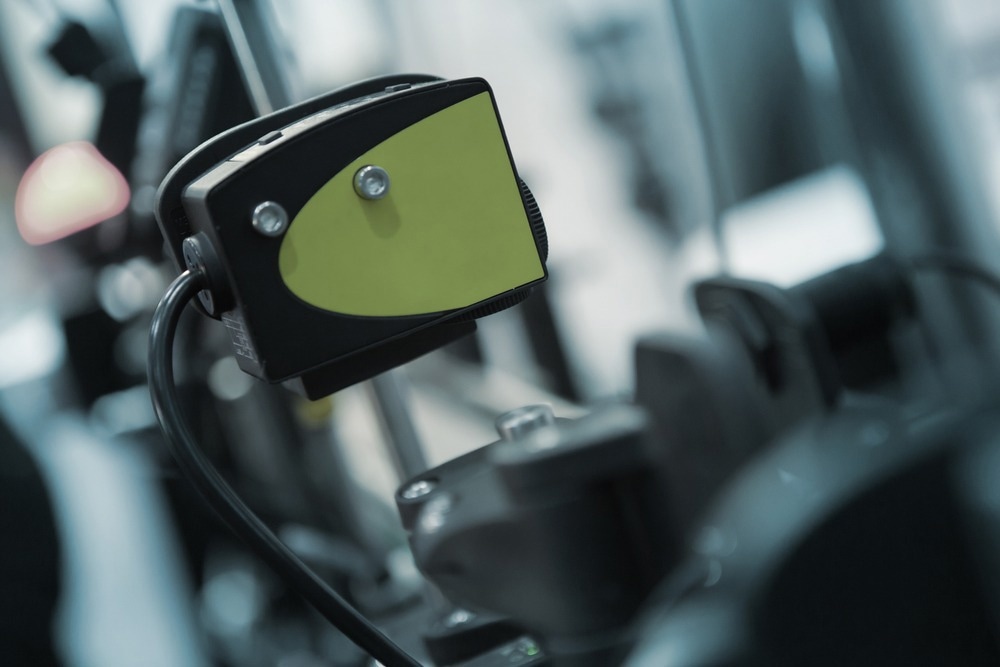Color sensors recognize and identify the color of a material in terms of the RGB (red, green, blue) color model that represents a color based on the contributions of the three primary colors.
Color sensors are types of photoelectric sensors that deliver light to a sample via a transmitter and then detect the light that is reflected back via a receiver. The color sensor detects the intensity of reflected red, green, and blue light, thus identifying the color in terms of the RGB color model.
More modern color sensors employ fiber optics in the color detection process, which has helped improve the method.
What Industries Utilize Color Sensors?
Various industries, such as automotive, color printing, cosmetics, food, paint, textiles and even medicine, rely on color sensors for various applications. Most often, these sensors are used in quality control applications, although they are also used in other unique applications such as blood analysis, dental surgery, and urine analysis.
For example, color sensors have been developed to detect glucose levels in the blood, which is important in helping doctors make analyses (e.g. diabetes). Color sensors have also been developed to accurately monitor kidney function via urine analysis; this application is invaluable to the early detection of Chronic kidney disease (CKD). The dental industry has also begun to utilize color sensors to assess the color shade of artificial teeth to ensure that they match the shade of the natural teeth that they will be sitting next to.
How Are Color Sensors Used in Product Inspection?
Due to their ability to detect and identify color with high accuracy and specificity, color sensors have become well-established in product inspection applications in various industries.
For example, color sensors are now heavily relied on in manufacturing for sorting. In this scenario, color sensors are used as a cheap and accurate way to detect features that facilitate automated part sorting on a conveyor. Often, this approach is chosen over expensive high-end systems to reduce overheads.
The product inspection capabilities of color sensors are also leveraged into applications of quality control. Color sensors have advantages over gray-scale analysis in quality analysis, as they can detect features not registered by grey-scale technology.
Another useful production inspection application for color sensors is inspecting color consistency. Color is vitally important to brand recognition, and therefore, it is essential to keep brand colors consistent across products. This is very difficult when products are produced with an array of materials. Color sensors are employed here to ensure that brand colors are kept consistent and that they do not vary between batches.
Finally, color sensors are also leveraged into automation applications. Color sensors are used by many industries, including manufacturing, textiles, paint, and more, to detect product deviations from the desired color.
Once deviations are detected by the sensors, these alerts automatically trigger corrective action to rectify the mistake. For example, in the manufacture of inks, proportionally more ink of a color could be added if color sensors detected the batch was deficient in blue, for example.

Image Credit: MOLPIX/Shutterstock.com
Commercial Examples of Color Sensors for Inspection Applications
Many color sensors have become commercially available over recent decades. Here we cover some common industry devices that are currently available on the market.
The colorSENSOR from Micro-Epsilon (available models CFO100 and CFO200) provides state-of-the-art color measurement technology for process industry and automation. Numerous sectors have adopted these sensors into their processes, most notably automotive, food production, printing, packaging, cosmetics and medical.
Another big name in commercial color sensors is Leuze, which offers a wide range of sensors applicable to various industries. Leuze color sensors work by comparing the detected color of a product to a predetermined value. The sensors are most commonly used for sorting or inspection tasks.
Finally, Sensopart offers a range of color sensors that evaluate color to identify objects, determine differing surface properties or shapes and detect changes in color. These sensors are often used in industrial production.
The color sensor market is vast and growing, and numerous companies enjoy a market share. In 2022, the market was valued at $1412.9 million, and it is expected to grow at a CAGR of 7.1% until 2028.
Technology Advances in Color Sensors
Traditionally, color sensors have faced the limitation of not being able to detect subtle color differences in highly reflective samples. Metallic paint, such as that used in the automotive industry, has posed a particular challenge to color sensors.
Fortunately, technological advances have allowed color sensors to develop to overcome this limitation. Next-generation color sensors can now be programmed with the help of algorithms so that they can intelligently decide when to ignore hot spots (e.g. when light is reflected back from a reflective sample that gives the perception that the color is much lighter than it really is), to give a much more accurate reading of its true color value.
References and Further Reading
Color & Contrast sensors [online]. Sensopart. Available from: https://www.sensopart.com/en/products/optical-sensors/color-and-contrast-sensors/
Color sensors [online]. Leuze. Available from: https://www.leuze.com/en-int/products/switching-sensors/color-sensors?p=1
Compact True Colour Sensor [online]. Micro-Epsilon. Available from: https://www.micro-epsilon.co.uk/color/true-color-sensors/
Gahan, B.G. et al. (2019) “A portable color sensor based urine analysis system to detect chronic kidney disease,” 2019 11th International Conference on Communication Systems & Networks (COMSNETS) [Preprint]. Available at: https://doi.org/10.1109/comsnets.2019.8711466.
Puiu, P.D. (2012) “Color sensors and their applications,” Springer Series on Chemical Sensors and Biosensors, pp. 3–45. Available at: https://doi.org/10.1007/978-3-642-25498-7_1.
Disclaimer: The views expressed here are those of the author expressed in their private capacity and do not necessarily represent the views of AZoM.com Limited T/A AZoNetwork the owner and operator of this website. This disclaimer forms part of the Terms and conditions of use of this website.